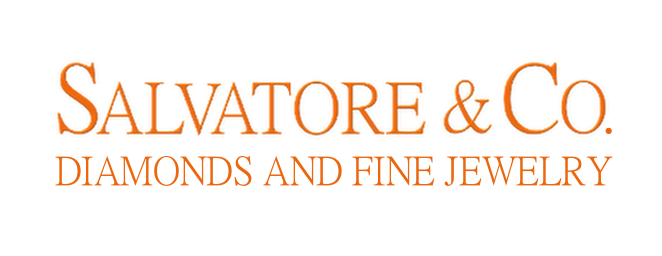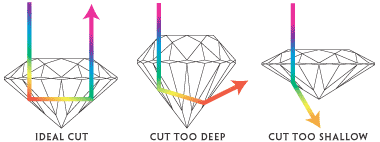Diamond Education
When purchasing a diamond, you'll hear mention of the 4 C's. This method of evaluating stones relies on four factors: cut, color, clarity and carat size. Nature dictates the qualitative characteristics color, clarity and carat. It is the cut of a diamond that is the only factor crafted by the human hand.
Diamonds are alive. A diamond is a single element of pure or nearly pure carbon. It is the purest of all the earth's gem minerals.Just because two diamonds look the same on paper, does not mean they actually look the same. A diamond cannot be evaluated by the 4 C's alone.
Diamond Shape
A diamond's shape refers to the general outline of the diamond. Although diamond shape does not fall into the 4 C's, it is an important factor when selecting a diamond. Diamond shape is not the same as a diamond's cut. Below are some examples of shapes of diamonds.
Round Brilliant: Modern version of the round. By far the most popular shape and has the best facets and angles for maximum brilliance.
Oval: Popular for three stone anniversary rings, with two matching diamonds on the sides.
Emerald: A more traditional shape, exuding old world elegance.
Radiant: Has more facets than a princess, but has the corners trimmed like the emerald shape.
Pear: Tear drop shape and has good proportions to refract light.
Princess: A square cut diamond that has refractive properties almost near round brilliant.
Marquise: A traditional shape.
Heart: A heart shape diamond has sentimental purpose and meaning.
Diamond Cut
A well-cut diamond, regardless of its shape, determines the fire and brilliance of the diamond. The hands of a skilled craftsman release its fire, sparkle and beauty. If a diamond is cut to perfect proportions, light will reflect and refract, making it seem to radiate from within.
Here are some examples of diamond cut.
Below is a diagram comparing ideal, deep and shallow cut proportions of a diamond and how they refract light. Notice how only an ideal cut diamond refracts light out of the top. An ideal cut diamond will appear bright and sparkly. A deep cut diamond has a smaller table and therefor will appear smaller. If you had an ideal cut diamond next to a deep cut diamond of the same carat weight, the deep cut diamond would not only look darker and duller, but also smaller than the ideal cut diamond.
Diamond Color
Diamonds are graded on a color scale of D through Z, based on the degree to which the diamond approaches colorlessness. While many diamonds may appear transparent to an untrained eye, the majority of stones contain slight tints of color. Salvatore and Co can demonstrate the different grades of diamonds by showing stones side-by-side.
By rare accidents of nature, diamonds may occur in colors, which are called Fancies. Fancy colored diamonds are much sought after because of their extreme rarity, particularly yellows, pinks and blues. Their quality is judged by the intensity of the hue, and unlike white diamonds, the more color the rarer the stone.
Diamond Clarity
Clarity refers to the number of imperfections, or inclusions that exist within a diamond. Virtually all diamonds contain identifying characteristics or birthmarks, most of them too small to see with the naked eye. These inclusions, when viewed under magnification may look like feathers, clouds or crystals. Diamonds with the fewest inclusions possess the highest clarity and are the most valuable. In general, the greater the number and size of inclusions the lower the clarity grade and less rare the diamond.
FL - IF: Flawless - Internally Flawless, VVS1 - VVS2: Very Very Slightly Included, VS1 - VS2: Very Slightly Included, SI1 - SI2: Slightly Included, I1, I2, I3: Included
Diamond Carat Size
Carat weight is the standard measure of a diamond's size. Each carat is equal to 100 points. Thus, a 0.50-carat diamond is the same as a 50-point or ½ carat stone. Diamonds of equal carat weight may vary greatly in brilliance depending on their symmetry and cut, so carat weight alone cannot determine a diamond's worth.
The combined carat weight of a grouping of several smaller stones is not as valuable as a single stone of the same carat weight.
Note: Carat is a measurement of WEIGHT, not SIZE and so the overall diameter (mm) could differ slightly larger or smaller even though the carat weight is correct.













